A legendary neighbourhood, an ambitious project, and four years of construction, Montparnasse Tower has a fascinating history.

MONTPARNASSE
Montparnasse, or Mount Parnassus, takes its name from a rural hill, razed in 1725, which students likened to the dwelling place of the Muses. In the 18th century, cabarets located along the rue de la Gaité, at that time beyond the Paris city limits, were exempt from taxes on alcoholic beverages. Soon, dance halls and theatres began to dream of making money off of this clientèle, such as Bobino (1819), where guests were entertained by singers like Mistinguet, Chevalier, Edith Piaf, and more. Then, in just a few years, a group of cafés that have since become famous sprang up: Le Dôme (1897), La Rotonde (1911), Le Select (1925), and lastly, La Coupole (1927). Artists and writers, often expats, rubbed elbows there
First Germans and Russians, then Americans. The 1929 Wall Street Crash brought curious people, who came to dance at le Bal Nègre or at le Jockey. The Roaring Twenties may be over, but today Montparnasse has regained the vitality of its old days, at any hour of the day.
THE PROJECT
The story of Montparnasse Tower began in 1934 when the SNCF, the French rail company, decided that the Gare Montparnasse train station no longer met its needs. After 25 years, the reconstruction project resulted in a large-scale urban renewal project; the train station would be moved and the newly-freed up land would be used for new purposes.
In 1959 , the first studies for Montparnasse Tower were conducted, and the historic project was criticised for its height, and met with roadblocks.
The winning project, designed between June 1966 and spring 1969, brought together four architects: Urbain Cassan, Eugène Beaudouin, Louis de Hoÿm de Marien, with help from architect Jean Saubot.
In 1968 , Minister of Culture André Malraux granted the building permit.
In 1969 , French President Georges Pompidou, looking to modernize the capital’s infrastructures, approved the construction of a truly modern urban development complete with a shopping centre. Construction could then begin on Montparnasse Tower.
In April 1970 lthe first stone was laid. The first step of the project was removing 420,000 m3 of rubble. For urban planning reasons, Montparnasse Tower needed to be constructed right over the metro (underground), which needed to be protected by a reinforced-concrete shell.
In October 1970 the foundations were completed.
In March 1972 , the highest point of the tower reached 200 metres and 57 storeys.
In December 1972 the tower grew another 9 metres when a radio wave relay station and a heliport were installed on what would later become the Montparnasse Tower Terrace.
After nearly four years of construction, Montparnasse Tower was inaugurated on 18 June 1973 . So begins the story of the only skyscraper in Paris.
Visit the tower
Paris’s best view is from the top of Montparnasse Tower. Experience one of the top things to do in Paris from the 56th-floor observatory and 59th-floor rooftop.
Other interesting articles
A breathtaking experience…and no need to queue, discovering the best montmartre view, paris at night: top 7 things to do, experience the view.
Looking for the most breathtaking view in Paris? Look no further than the rooftop terrace and Montparnasse Tower. Access is included with every ticket.
the perfect view
Stay updated.
Stay informed and never miss out on exclusive offers by joining our email list.
Montparnasse Tower 33 Avenue du Maine 75015 Paris
Discover exciting opportunities for you to grow your career at Paris Montparnasse.
- Terms and conditions
- Privacy Policy
- Internal Regulations
- Legal Notice
- Website Terms of Use
HOURS AND VISIT
Open every day, from 9:30 am
- From 01/10 to 31/03: at 10:30 pm on weekdays, at 11 pm on weekends & public holidays.
- From 01/04 to 30/09: at 11:30 pm.
Last lift 30 minutes before closing.
Interested in working at the top of Paris?
Find anything you save across the site in your account
A Defense of the Ugliest Building in Paris

The sole skyscraper in central Paris celebrated its fiftieth anniversary recently, though “celebrate” may not be le mot juste . When the city’s official Twitter account wished the Tour Montparnasse (“Montparnasse Tower”) a happy birthday, the responses were hostile even by the standards of that platform, ranging from “ Quelle horreur ” to “ La pire chose qui soit arrivée à Paris depuis les Nazis ” (“The worst thing to happen to Paris since the Nazis”) to simply “ Non .” Since I happened to be in town, I went to visit Paris’s least beloved building for the commemoration of its first half century. Nothing was out of the ordinary for a quiet Sunday afternoon: Falun Gong members sat in cross-legged protest on the concrete plaza; rough sleepers huddled against the walls and stairways of the complex’s shopping center; T-shirted tourists went straight up to, and came straight down from, the fifty-sixth floor.
That floor is occupied by a panoramic observation deck, which offers the most expansive view of Paris from above—and, more important, the only such view that doesn’t show the Tour Montparnasse itself. That oft-heard half-joke repurposes a similarly waspish remark attributed to the playwright Tristan Bernard about the Eiffel Tower, which, despite his resentment, has become a globally beloved symbol of French civilization. It’s a rare Paris postcard that fails to include the older tower, and a rarer Paris postcard still that fails to exclude the newer one. (Even the hooded sweatshirts for sale in the Tour Montparnasse’s own gift shop bear the image of the Eiffel Tower.) Nowhere else has such a physically conspicuous building arguably made so little obvious cultural impact; if, after fifty years, Parisians no longer ignore the Tour Montparnasse, that may be because they no longer see it in the first place.
One can hardly deny feeling something un-Parisian, even anti-Parisian, exuded by the dark, Kubrickian slab rising out of its nineteenth-century surroundings. But nor, on closer inspection, can one deny the traces of élan in its design. In “ La Tour Montparnasse 1973-2013 ,” the French journalists Sylvie Andreu and Michèle Leloup’s history and collection of reflections published for the building’s fortieth anniversary, the late architect Michel Holley, who was initially involved in the project, praises “the fissures that lighten its shape and its oval character, along with the lateral indentation.” Another deceased peer, Claude Parent, adds that “it wasn’t quite the modern American skyscraper, the glass parallelepiped, but something different, a European flavour, with ledges. They showed a certain quest for form in the vocabulary of the parallelepiped: that touch of visible architecture with its lateral folds, which straighten it and give it its verticality. It is intelligent, this tower, and if it was deliberate . . . so much the better!”
Many of those quoted in the book who express appreciation for the Tour Montparnasse belong to the architectural professions. This will hardly come as a surprise to detractors who file it alongside Boston’s brutalist City Hall as structures only an architect could love. Boston City Hall and the Tour Montparnasse were once ranked the ugliest and second-ugliest building in the world, respectively, but, apart from standing over the kind of plaza invariably described as “windswept,” the two have little in common. The standard rebuttal to enthusiasts of Boston City Hall is that, however intensely they may appreciate its aesthetics, they don’t have to spend their days inside it. If the Tour Montparnasse lacks brutalism’s raw-concrete sublimity, it also lacks that style’s propensity to practical dysfunction. In the words of the architect and urban designer Virginie Picon-Lefebvre, one of the main experts called to comment on the building’s fiftieth anniversary, “it was really comfortable to work there.”
Indeed, the Tour Montparnasse was conceived as a means of introducing high-tech modernity into postwar Paris, which, though spared widespread bombing, had nevertheless fallen over time into a state of general dilapidation. This function secured the building a perhaps unexpected supporter: André Malraux, the novelist, art theorist, and decorated Resistance member, who was appointed as France’s first-ever Minister of Cultural Affairs under Charles de Gaulle , in 1959. A somewhat contradictory figure, Malraux was both aesthete and public official (a combination difficult to imagine outside France), and also an advocate for both preservation and modernization. Out of the former impulse came, among other projects, the restoration and subsequent architectural lockdown of the once aristocratic, now trendy district of Le Marais; the latter enabled the construction of the Tour Montparnasse, as part of a neighborhood-wide development scheme that necessitated eliminating not just several streets but also forty-four hundred homes that constituted “ îlots insalubres ” (“unsanitary islets”).
In “La Tour Montparnasse 1973-2013,” Jean Digne, then the president of the now defunct Musée du Montparnasse, relates having heard that seven hundred artists’ studios were also destroyed in the process. This must have underscored definitively that Montparnasse was no longer the bohemian paradise of the interwar period, when it had been the quarter of choice for Picasso , Dalí, Modigliani , Hemingway , Beckett . Even in their day, the neighborhood’s infrastructure strained to accommodate its population: the rail station Gare Montparnasse, from 1852, was put forth as a candidate for replacement in the nineteen-thirties. More than twenty years passed before that project began in earnest, by which time it had expanded to include a set of residential buildings, a commercial center, and the tower. Just as Chaillot hill has the Trocadéro, the Place de l’Étoile the Arc de Triomphe, Montmartre the Sacré-Cœur, and Mount Saint-Geneviève the Panthéon, Malraux reportedly proclaimed in the late fifties, “Montparnasse will have its landmark!”
Only after nearly a decade of political squabbling and financial difficulty (cleared up thanks to the bracingly pragmatic intervention of the American real-estate developer Wylie F. L. Tuttle) did the project’s building permit come through. The Tour Montparnasse opened on June 18, 1973, fifteen years after it was first proposed. By that time, it looked less like a bold declaration about the future than a faintly embarrassing relic of the past. Eugène Beaudouin, Urbain Cassan, Louis de Hoÿm de Marien, and Jean Saubot, the architects who had collaborated on the building’s design, were hardly youthful revolutionaries in the first place. (Beaudouin and Cassan were born in the nineteenth century.) Les Trente Glorieuses , France’s thirty-year period of rapid postwar economic growth, was running its course. “The party was over and architecture was screwed,” Parent says in “La Tour Montparnasse 1973-2013.” “The momentum of the 1950s, exciting for everyone, even the public, was fading.”
Nor did any appetite remain for tall buildings. In 1977, a thirty-seven-metre height limit was imposed within Paris, exiling high-rises to outlying districts like the business center of La Défense. (In 2010, at the behest of then mayor of Paris, Bertrand Delanoë, the limit was raised to a hundred and eighty metres for offices and fifty metres for housing in specific areas.) “The new skyscraper on the Boulevard du Montparnasse is almost an accident,” Saul Bellow wrote , after a visit in the early nineteen-eighties, “something that had strayed away from Chicago and come to rest on a Parisian street corner.” Unremarkable though it would look in a major American city, the Tour Montparnasse is made ridiculous by its isolation in Paris. A few politicians have proposed knocking it down (easier said than done, given the three-hundred-way division of the complex’s ownership), but the problem of its supposed ugliness could just as well be solved by changing its context: surrounding it with a cluster of other towers, or even punctuating the whole of the city—tastefully, bien sûr —with skyscrapers.
Such solutions assume that the lessons of the Tour Montparnasse have been learned. Observers bemoan everything from its height to its interruption of the line of perspective down Rue de Rennes (an objection that may strike Americans as a parody of French fussiness) to its gray-brown color, which, as the journalist and architect Philippe Trétiack says, in “La Tour Montparnasse 1973-2013,” “has a touch of the nicotine stain about it.” Several of the book’s contributors identify the tower’s truly unforgivable sin as the fact that it is built atop a broad concrete base. Trétiack calls this design element, a common feature of skyscrapers of the sixties and seventies, “a rupture in the urban fabric,” framing it as an expression of a classic French tendency in the organization of space: “It is our Versailles side, our yearnings for power that force everyone to climb flights of stairs to access the ‘thing,’ to penetrate the building.”
This aspect of the Tour Montparnasse reminds me of another building of the nineteen-seventies, albeit one designed by a thoroughly American architect. When I lived in Los Angeles in the early twenty-tens, I would pass through John Portman’s Westin Bonaventure Hotel & Suites, enchanted by its futuristic atrium lobby, with its concrete banquettes cantilevered above extravagantly spurting water features. Like the seedy shopping mall at the Tour Montparnasse’s complex, whose Galeries Lafayette department store closed in 2019, the Bonaventure’s retail area had clearly fallen on hard times. What spaces weren’t sitting vacant were occupied by off-brand eateries and haphazardly stocked gift shops, the result of a lack of foot traffic exacerbated by the difficulty of navigating the looping floor plan. But another factor is the hostility of the building itself to the street, which the hotel meets with a blank four-story concrete podium.
Atop that podium stands a quintet of cylindrical glass towers whose appearances in countless Hollywood movies have made the Bonaventure one of Los Angeles’s few recognizable architectural signifiers. The Tour Montparnasse has a patchier résumé in French cinema, beginning with Luis Buñuel’s “The Phantom of Liberty,” from 1974, in which a gunman on the high-rise’s still-empty thirtieth floor picks off passerby in the streets below (and, in a characteristically Buñuelian satirical turn, becomes a celebrity after his capture). The building has a larger role in “La Tour Montparnasse Infernale,” a slapstick action-thriller parody in which the comic duo Éric Judor and Ramzy Bedia play a pair of dim-witted window-washers who get caught up in a terrorist attack on the building. Given this subject matter, it was the film’s good luck to come out in early 2001.
Had they not been destroyed on 9/11, the Twin Towers, too, would have marked their fiftieth anniversary this year. But, as a work of architecture and a presence in the city, would that design now be much better regarded than the Tour Montparnasse? Minoru Yamasaki’s World Trade Center also drew criticism from the beginning, and for similar reasons: their inordinate scale, their separation from their environment, their essentially technological nature. On a more basic level, colossal form clashed with mundane purpose: both the Twin Towers and the Tour Montparnasse were conceived as nothing more than large office buildings. In “La Tour Montparnasse 1973-2013,” the landscape architect Pierre-Marie Tricaud says, “What I find shocking is that before it, only public buildings—political or religious—stood out from the urban fabric; there is an association between form and function, and you wonder why it is this structure that has taken over the sky.”
The Tour Montparnasse, the World Trade Center, and the Westin Bonaventure Hotel went up during the long postwar push for “ urban renewal ,” which involved scraping “blighted” neighborhoods off the map in order to build privately owned megastructures meant to replicate attractions of the urban environment in an enclosed, controlled space. The effects of this ethos are most lamented in U.S. cities, where the slick, vertiginous kitsch of Portman’s signature atrium hotels has become emblematic of the era. But the practice arguably began a century earlier, in Paris, through which Baron Haussmann plowed his wide boulevards to create those lines of perspective so vigilantly maintained today. Aberrations like the Tour Montparnasse only underscore how much Paris remains Haussman’s city, its core frozen in a nineteenth century whose built environment can be restored, and in some cases discreetly renovated, but which—so the severity of the restrictions implies—can never fundamentally be improved upon.
Architectural fashion treasures hundred-and-fifty-year-old structures but derides fifty-year-old ones; hence the works of brutalism that have faced the wrecking ball in recent years. “The destruction of brutalist buildings is more than the destruction of a particular mode of architecture,” Jonathan Meades says, in his television documentary “Bunkers, Brutalism and Bloodymindedness: Concrete Poetry.” “It is like burning books. It’s a form of censorship of the past, a discomfiting past, by the present. It’s the revenge of a mediocre age on an age of epic grandeur.” In “La Tour Montparnasse 1973-2013,” Picon-Lefebvre takes a similar perspective on the high corporate style of the sixties and seventies, exemplified by the Tour Montparnasse: “We have very unfairly erased those years and their architects, who demonstrated an optimism and a momentum we have completely lost.” But, she says, “young people today are fascinated by that period, and many of them want to work on renovating its buildings.”
The Tour Montparnasse is set to undergo its own long-discussed renovation, originally scheduled to finish by the time of Paris’s Olympic Games next year. But the work shows no signs of having begun, and, perhaps in anticipation of its replacement, the tower’s exterior has been allowed to fall into a state of mild dereliction, with several windows on each of its faces covered by what look like pieces of wood. The project will involve making the now dark glass walls transparent while installing vegetation-filled spaces, including a rooftop greenhouse, in order to achieve what the renovators, a group formed by three French architecture firms, call “a complete sustainable ‘green’ makeover of the façade.” Just like the original, this is a design wholly of its time—our time—when the idea of “sustainability” plays much the same role that “modernity” did in the nineteen-fifties.
It was in environmental terms that Daniel Libeskind , who worked on the design of the Twin Towers’ even taller successor, One World Trade Center, defended the Tour Montparnasse. “Parisians reacted aesthetically, as they are wont to do, but they failed to consider the consequences of what it means to be a vital, living city versus a museum city,” he told T , the style supplement of the Times, in 2015—and, what with “the carbon footprint, the waste of resources, our shrinking capacity, we have no choice but to build good high-rise buildings that are affordable.” The officialdom of Paris seemed to accept this, approving the construction of a new skyscraper, the Tour Triangle, that same year. Though it will be shorter than its predecessor, the Tour Triangle has already outdone the older skyscraper in another respect, having inspired, while still under construction, enough outcry to cause the reimposition of the thirty-seven-metre height limit. As the acclaimed architect Jean Nouvel put it in a recent documentary about the Tour Montparnasse, “In France, we are beheading champions.” ♦
New Yorker Favorites
As he rose in politics, Robert Moses discovered that decisions about New York City’s future would not be based on democracy .
The Muslim tamale king of the Old West .
Wendy Wasserstein on the baby who arrived too soon .
An Oscar-winning filmmaker takes on the Church of Scientology .
The young stowaways thrown overboard at sea .
Fiction by Jhumpa Lahiri: “ A Temporary Matter .”
Sign up for our daily newsletter to receive the best stories from The New Yorker .

Tour Montparnasse
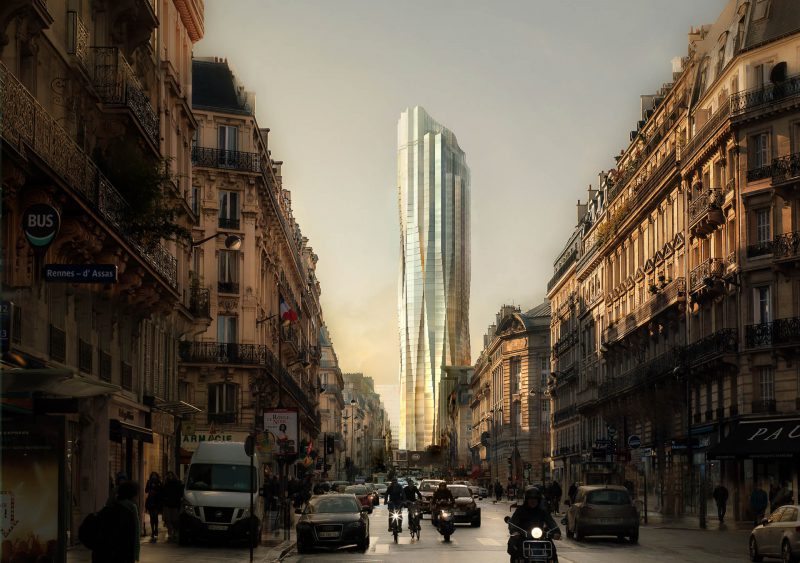
The new Tower, seen from the Rue de Rennes // La nouvelle Tour, depuis la rue de Rennes.
Location Paris, France
Status Design completed 2017
Client L’Ensemble Immobilier Tour Maine-Montparnasse (EITMM)
Type Civic, Office
Size 1,600,000 sf
Sustainability Targeting HQE Exceptionnel, BREEAM Excellent, LEED Gold, Well GOLD
Developed for the international competition to redesign Tour Montparnasse, Studio Gang’s design transforms this monolithic skyscraper into a beautiful new landmark for twenty-first-century Paris—a tower that is simultaneously a dynamic hub for economic innovation, a vibrant center of community life, and a global model of sustainability.
A new, faceted facade gives the Tower a shimmering silhouette that marks its presence in the Parisian landscape from wherever it’s seen. Like the historic Haussmann-era buildings of the quartier Montparnasse, each level of the Tower adopts a human scale, while at the scale of the city, the building inscribes itself with a generous monumentality.
The design’s intrinsic beauty goes beyond its exterior appearance to offer renewed functionality and program, as well as far greater environmental performance. A diverse combination of uses and services make the tower a powerful economic engine and lively gathering place. Its transparent base serves as an inviting front door for its many offerings, which include fifty floors of work space, a spectacular observatory with indoor garden, restaurants with terraces, a hotel, cafés, a co-working hub, retail, a gym, and conference center.
Film by Neoscape
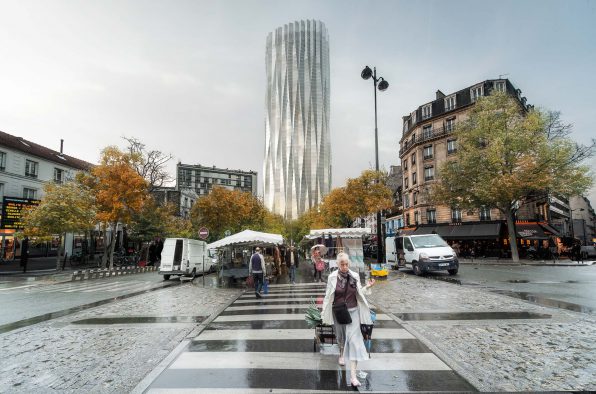
Known for its creativity, the Montparnasse neighborhood enjoys an energetic dialogue with the new tower via le boulevard Edgar-Quinet. // Le quartier Montparnasse, bien connu pour sa créativité, renoue avec la Tour un dialogue riche et vivant, ici depuis le boulevard Edgar-Quinet.
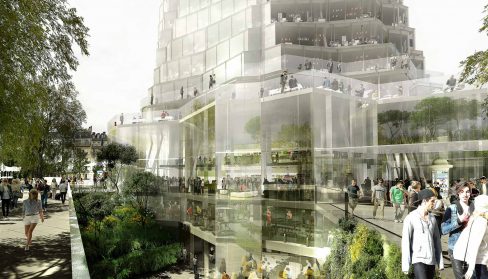
A series of biodiverse gardens provides an enchanting tableau that changes with the seasons and creates a focal point for the Tower’s lower floors. // Dans la succession de jardins et d’espaces verts, la variété des espèces compose un tableau enchanteur, qui évolue au fil des saisons et crée un point focal pour les étages inférieurs de la Tour.
The tower’s redesigned plaza works with the base to blur the boundaries between inside and outside, offering a much-improved experience and new amenities. Its topographic section with cascading gardens brings light and greenery to the building and its surroundings while maintaining an urban flexibility that accommodates everyday public activity, open-air markets, and large events. The plaza and base also incorporate a new urban mobility hub that connects different modes of transit. This asset is one of the project’s integrated sustainable features—which also include a high-performance facade, wind-derived shape, and green infrastructure systems—that together achieve a notable level of environmental performance commensurate with Paris’s leading role in the global battle against climate change.
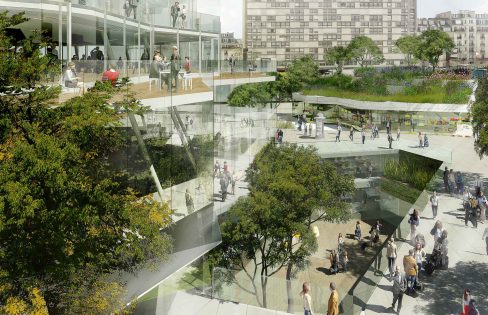
Blurring the boundary between indoors and outdoors, the transparent office lobby brings the best of the city’s urban energy inside. // Estompant par sa transparence les limites entre l’intérieur et l’extérieur, le lobby des étages de bureaux laisse entrer dans la Tour le meilleur de l’énergie urbaine.
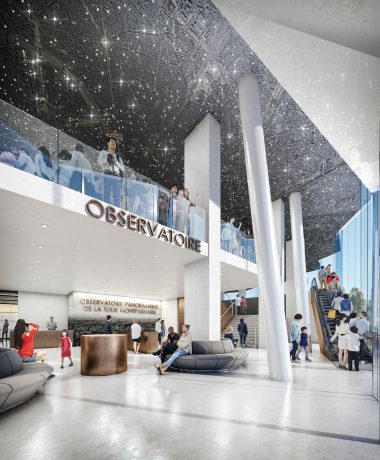
Directly accessible from the plaza, the Observatory visitor center marks the beginning of a dynamic, exciting journey to the Tower’s top. // Accessible directement depuis l’esplanade, le centre d’accueil des visiteurs marque le début d’une scénographie dynamique et stimulante.
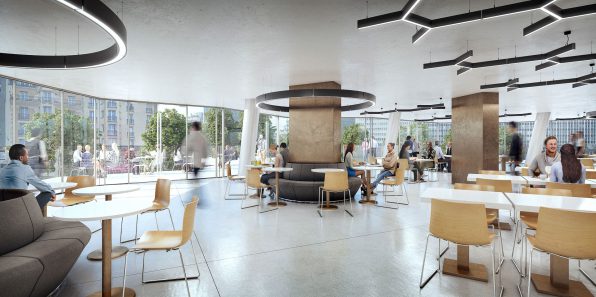
The employee restaurant extends into large terraces that overlook the plaza’s green roofs and gardens. // Le restaurant inter entreprises, en contact directe avec l’extérieur, se prolonge par de grandes terrasses qui donnent sur les toitures végétalisées et les jardins de l’esplanade.
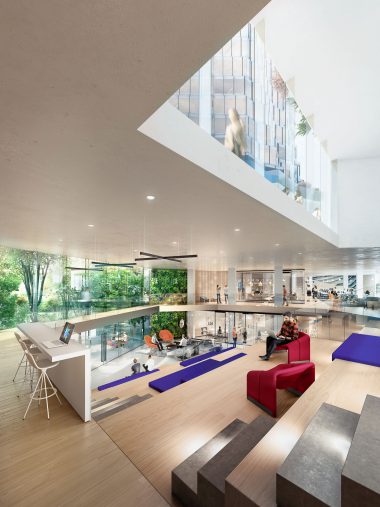
The co-working hub offers start-ups, entrepreneurs, and independent workers a dynamic and innovative environment for new ways of working. // Le pôle de coworking offre aux startups, aux entrepreneurs et aux indépendants un environnement de travail dynamique et innovant, pour de nouvelles façons de travailler.
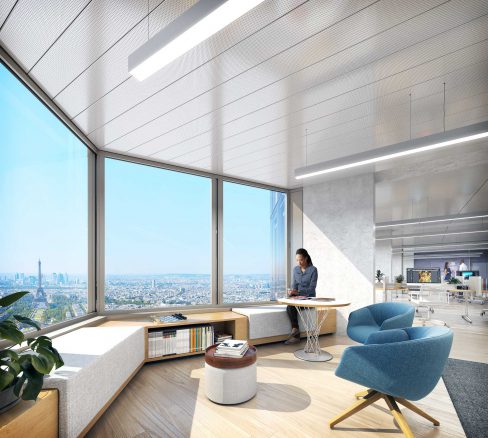
The bay windows extend the facade to expand the space on each floor, generously allowing in natural light and opening up panoramic perspectives. // Les baies vitrées en dièdre s’avancent en façade pour magnifier l’espace à chaque étage, laissant généreusement entrer la lumière naturelle, touten ouvrant largement les perspectives sur le panorama.
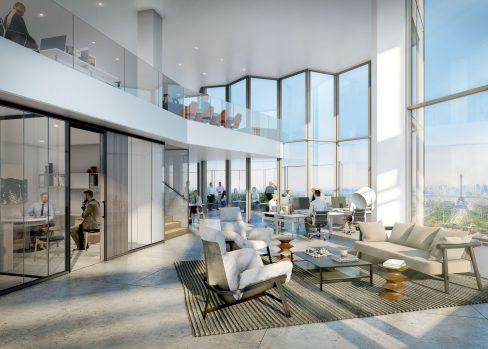
Inside the new tower, the faceted facade’s bay windows produce generous, flexible work spaces and exciting social spaces that are filled with natural daylight and open up expansive vistas of Paris. At its top, the building culminates in an extraordinary glass pavilion that offers 360-degree views of the city. Supported by a steel corolla structure, it houses a lush garden that gives a taste of the French terroir, as well as a théâtre de verdure that can accommodate a range of special events, live performances, and celebrations. This airy space where people, nature, and culture mix is designed to be an ideal belvédère from which to watch Paris’s bright future unfold.
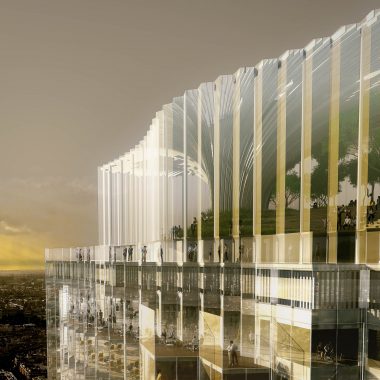
The Observatory’s terraces and restaurant offer visitors an unforgettable experience of the Parisian atmosphere. // Les terrasses de l’Observatoire et du restaurant offrent aux visiteurs la possibilité de vivre une expérience inoubliable, très haut dans le ciel de Paris.
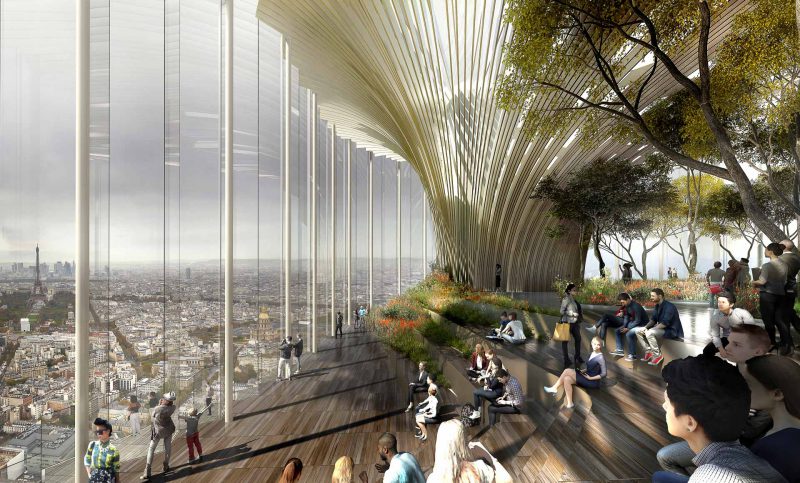
Perched high above the city, the théâtre de verdure provides a lively gathering place beneath a canopy of trees and structural corolla. // Suspendu très haut au-dessus de la ville, sous une canopée arborée, le théâtre de verdure est un lieu de convivialité animé, surmonté de la structure en corolle.
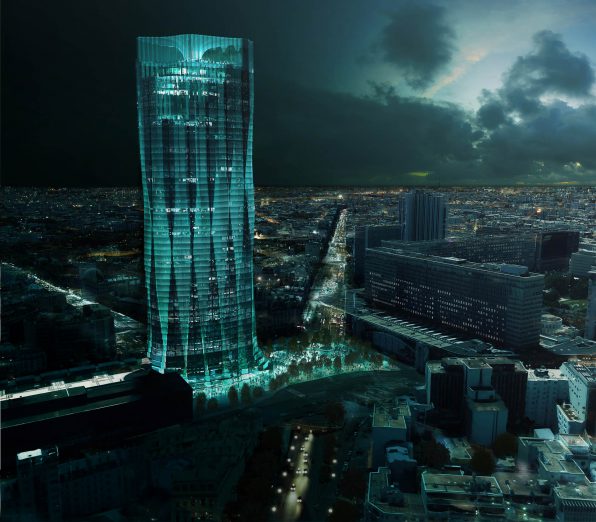
The lighting design elegantly emphasizes the Tower’s visual identity. // La scénographie des effets lumineux vient souligner avec élégance l’identité visuelle de la Tour.
Consultant Team
Chabanne et Partenaires , local architect
Terrell Group , structural and facade engineer
Hugh Dutton Associés (HDA), facade engineer
Thornton Tomasetti , structural engineer
Peter Heppel Associates , wind engineer
Rowan Williams Davies and Irwin (RWDI), wind tunnel engineer
Elithis , MEP engineer and sustainability consultant
Vincent Pourtau Economie et Associés (VPEAS), cost estimating
Licht Kunst Licht AG , lighting designer
Office of Landscape Morphology (OLM Paysagistes) , landscape architect
Casso et Associés , fire protection
Argénium , asbestos consultant
Cabinet Lamoureux, acoustics consultant
MovvéO Limited, elevator consultant
Transsolar , facade and sustainability peer review
Winner, Glass Future Prize, World Architecture Festival, 2018
Finalist, Competition Designs category, World Architecture Festival, 2018

ArchDaily — “OMA, MAD Among 7 Architects Selected in Competition to Redesign Tour Montparnasse”
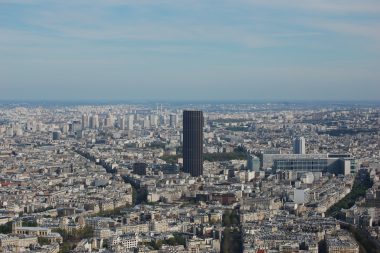
“The Ensemble Immobilier Tour Maine-Montparnasse (EITMM) has selected 7 notable firms to continue to the second round in a competition for the renovation of Tour Montparnasse in the Montparnasse district of Paris , France.”
The shortlist includes several French firms, as well as OMA, MAD, and Studio Gang.
Tour Montparnasse Wins Glass Future Prize World Architecture Festival
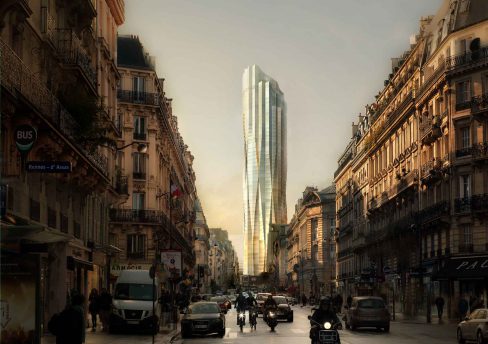
Tour Montparnasse was awarded the new prize which recognizes a future project that points to new ways in which glass and glass technology can be deployed.
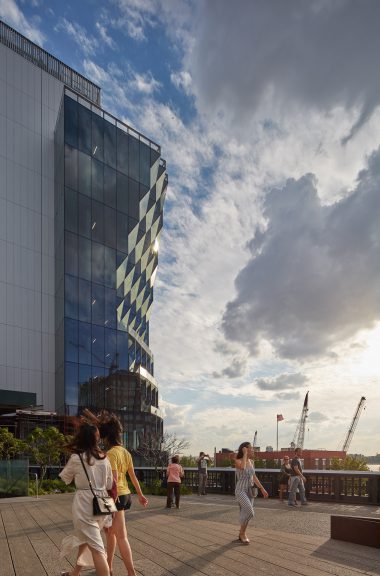

Home > What Nobody Told You About Tour Montparnasse (Montparnasse Tower, Paris)
What Nobody Told You About Tour Montparnasse (Montparnasse Tower, Paris)
The Tour Maine-Montparnasse , best known as Tour Montparnasse or Montparnasse Tower , is one of the most famous landmarks in Paris . With 59 floors and 210 m high, the Tower is Paris’ tallest building and the only skyscraper in the city. This stupendous Tower is situated at 33 Ave. du Maine, in the 15th Arrondissement of Paris. The entrance is at Rue de l’Arrivée, while the nearest metro stop is Montparnasse Bienvenue.
The Tour Montparnasse is named after the neighborhood it is located in. In the 17th century, students from the neighboring Latin Quarter liked to meet at the top of a small artificial hill in the south of the city, where sand and rubble were piled up, to recite poems. Ironically, the hill then took the name of Mount Parnassus , a mythical Greek mountain dedicated to the god Apollo and his nine Muses, protectors of the arts and poetry.
The Montparnasse neighborhood was from 1900 and, especially during the interwar period, the heart of Parisian artistic and intellectual life. After Apollinaire, Gauguin, Matisse, and the Douanier Rousseau, many foreign artists, mostly Jews, went into exile in Paris: Modigliani, Zadkine, Soutine, Chagall, and many more. They were attracted by the affordable rents of housing and workshops.
The Montparnasse neighborhood is also home to the Montparnasse Cemetery , one of the most beautiful cemeteries in Paris , the Observatoire de Paris, the Fondation Cartier pour l’Art Contemporain, and the Carrières des Capucins .
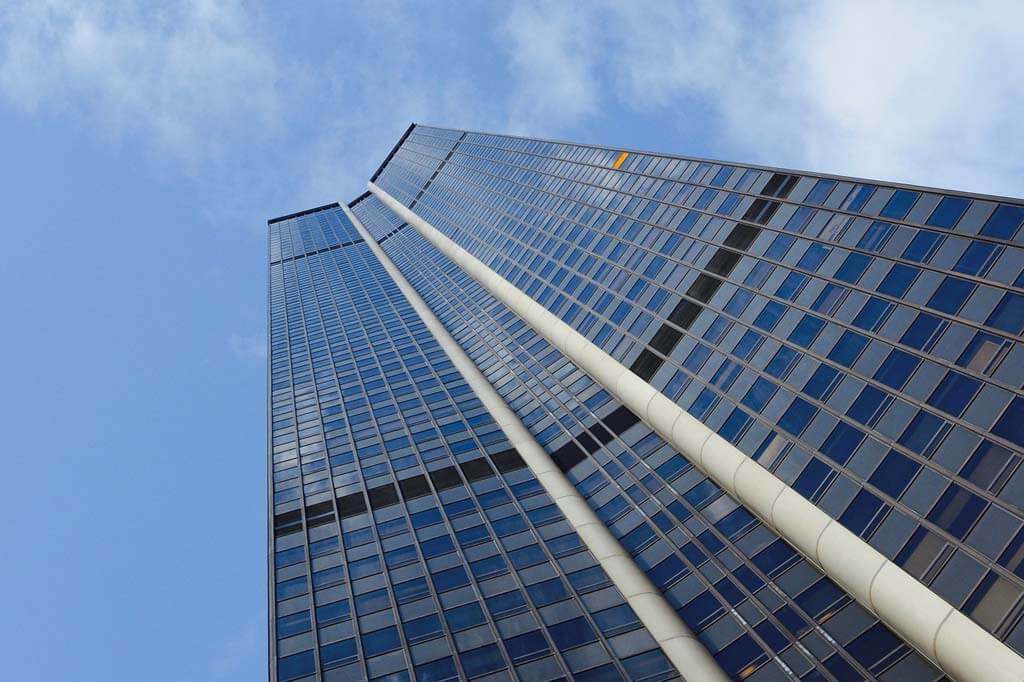
Tour Montparnasse Hours and Ticket Price
From 1 October to 31 March, the Tower is open from 9.30 am to 10.30 pm, from Sunday to Thursday, and from 9.30 am to 11.00 pm on Fridays, Saturdays, and holidays.
From 1 April to 30 September, the Tower is open from 9.30 am to 11.30 pm every day.
Tour Montparnasse tickets cost 15€ (adults), 11€ (students and visitors aged 12 to 17), and 7.50€ (kids aged 4 to 11). It is free to visit for kids under 4 years – Click here to book your tickets in advance
Access to Tour Montparnasse is included in The Paris Pass (now Go City Paris) . There are also interesting bundles combining some of the top Paris attractions that make you save time and money:
- Montparnasse Tower + Seine Cruise (5% off)
- Montparnasse Tower + Arc de Triomphe (5% off)
- Montparnasse Tower + Opera Garnier (5% off)
Tour Montparnasse Inside
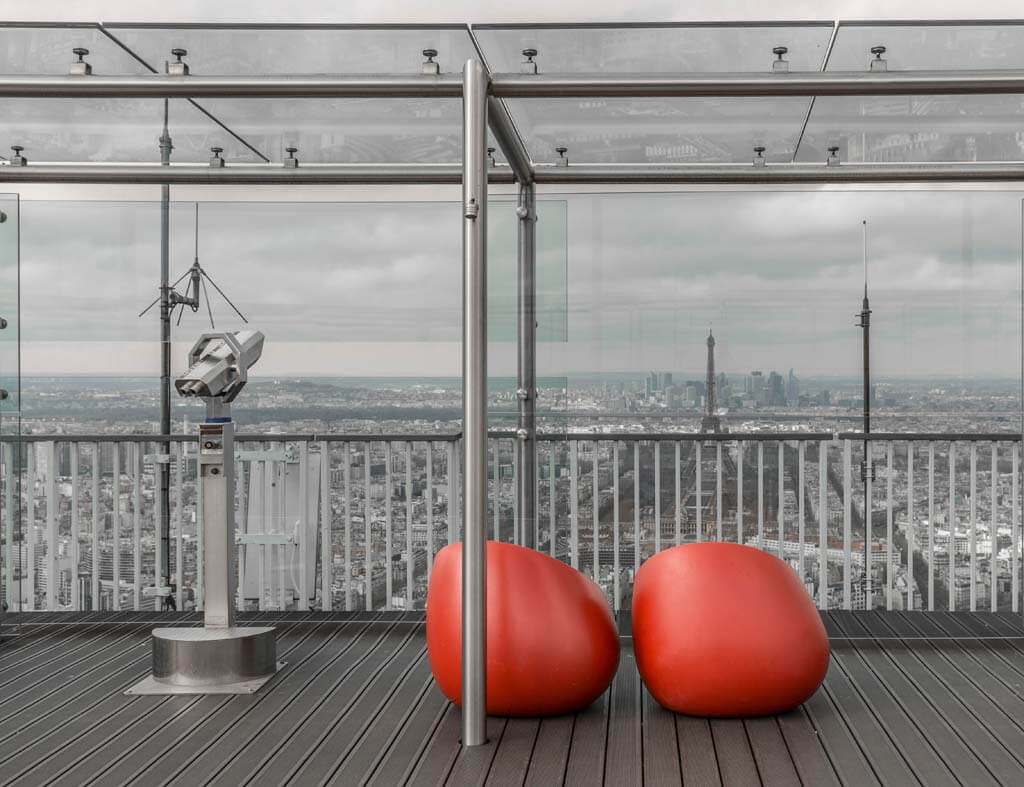
The Montparnasse Tower has 59 floors above ground and six floors underground. The floors open to visitors are floor #56 and floor #59.
Montparnasse Tower Obervation Deck
Prepare for a dizzying ascent: the Tower’s lightning-fast elevator rises from the ground floor to the 56th floor in just 38 seconds! This lift is one of the fastest lifts in Europe at speeds reaching 60km/h.
Called the Montparnasse Tower Observation Deck , the 56th floor allows visitors to admire breathtaking views of Paris protected from wind and rain. The Montparnasse Tower Observation Deck is equipped with avant-garde interactive and audio-visual facilities to aid in interpreting the views of the city you see below. These include exhibitions, binoculars, interactive facilities, viewpoint tables, quizzes, and more.
You will also find a bar-restaurant, a café and a souvenir shop on this floor.
The Terrace
The Montparnasse Tower tickets also give you access to the 59th floor. This is actually an outdoor roof terrace that, at 210 meters high, offers a breathtaking 360-degree view of Paris.
This floor is accessible by stairs from the 56th floor, and it has telescopes and orientation tables to help visitors locate the monuments and famous buildings of Paris .
Interesting and Quirky Facts About the Montparnasse Tower, Paris
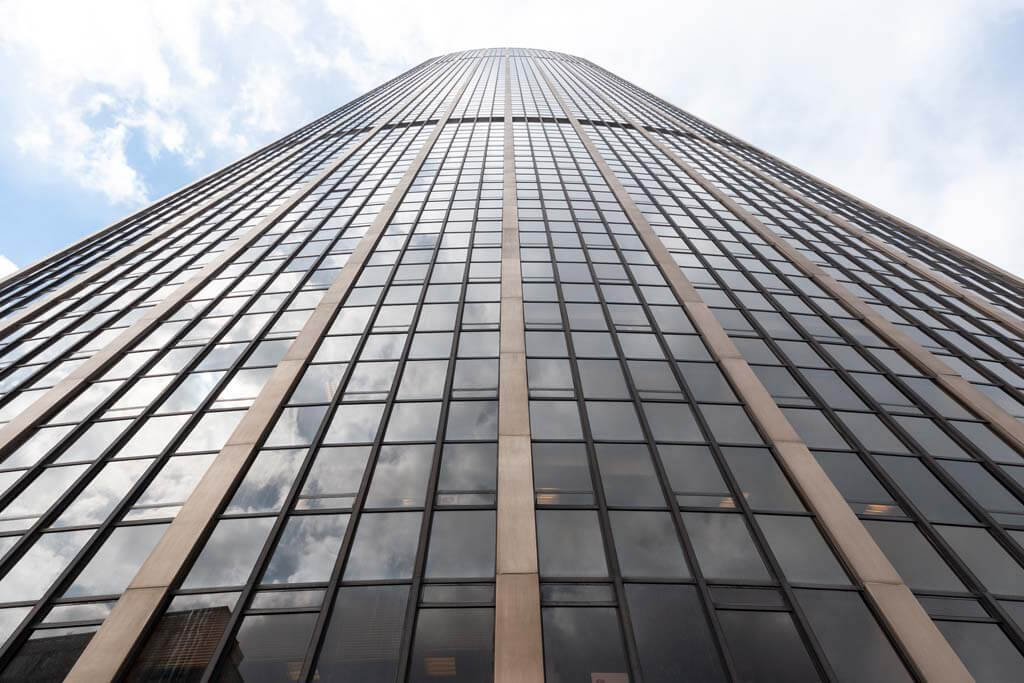
In addition to its location and imposing architecture, here are some interesting Montparnasse Tower facts.
1. Tour Montparnasse’s Main Figures
The Tour Montparnasse weighs 150,000 tons, has an oval shape of 164 x 104 meters, and has six underground levels and 59 floors.
It has 70 m of foundation, 25 lifts working at 6m/second, 40,000m2 of façade, 7,200 windows, and 1306 stairs. The Montparnasse Tower receives 1,2 million visitors per year on roofs #56 and #59, while the rest of the Tower is a prestigious address that welcomes around 5,000 employees daily.
2. It took 11 Years to Approve the Construction of the Montparnasse Tower
From the first drawings to the beginning of the construction, it took eleven years to approve the project!
All began in 1959 when the French rail company, SNCF, decided that the Montparnasse Station needed to be renovated and moved to accommodate the growing influx of passengers. So much to Paris’ dismay, the Gare Montparnasse was moved to its current location, and a 59-story tower was designed on the site of the former station to house Parisian office buildings.
The project was strongly criticized because of the height of the building. A controversy began and led to slowdowns in the project, led by the Minister of Equipment Edgard Pisani, who obtained the support of André Malraux, then Minister of Culture under General de Gaulle.
In 1969, Georges Pompidou, President of the Republic, wanted to provide Paris with modern infrastructure and granted the construction of a real complex with a Shopping Center. The construction of this Paris skyscraper could then begin.
In April 1970, the first stone was laid, and French multinational VINCI built the Tower after the design of architects Eugène Beaudouin, Urbain Cassan, and Louis Hoym de Marien. VINCI is also known for constructing the Centre Pompidou, the Channel Tunnel, and the Stade de France.
It took four years to complete the Tower, and was finally inaugurated in 1973.
3. The Montparnasse Tower Was Strongly Criticized by Parisians
Just like with the Eiffel Tower and the Louvre Pyramid , Tour Montparnasse’s design and imposing measures were strongly criticized by Parisians.
While the Eiffel Tower and the Glass Pyramid eventually became the most popular landmarks in the city and Parisians fully embraced the Eiffel Tower as the ultimate symbol of their city, the resentment toward the Tour Montparnasse never went away, and it still isn’t liked by Parisians.
The Parisians were so unhappy that the city of Paris passed a law banning further buildings over seven stories tall in the historical center of Paris to prevent such a fiasco from happening again.
4. The Tour Montparnasse Was Voted the Second Ugliest Building in the World
In 2008, the travel website named Virtual Tourist , rest in peace, organized a competition amongst its readers to choose the World’s Ugliest Buildings, and the Montparnasse Tower was voted second!
Only the Boston City Hall , a Brutalist building in Boston, was voted uglier, an honor that we are not sure their cities are proud of.
5. The Montparnasse Tower Offers the Best View of Paris
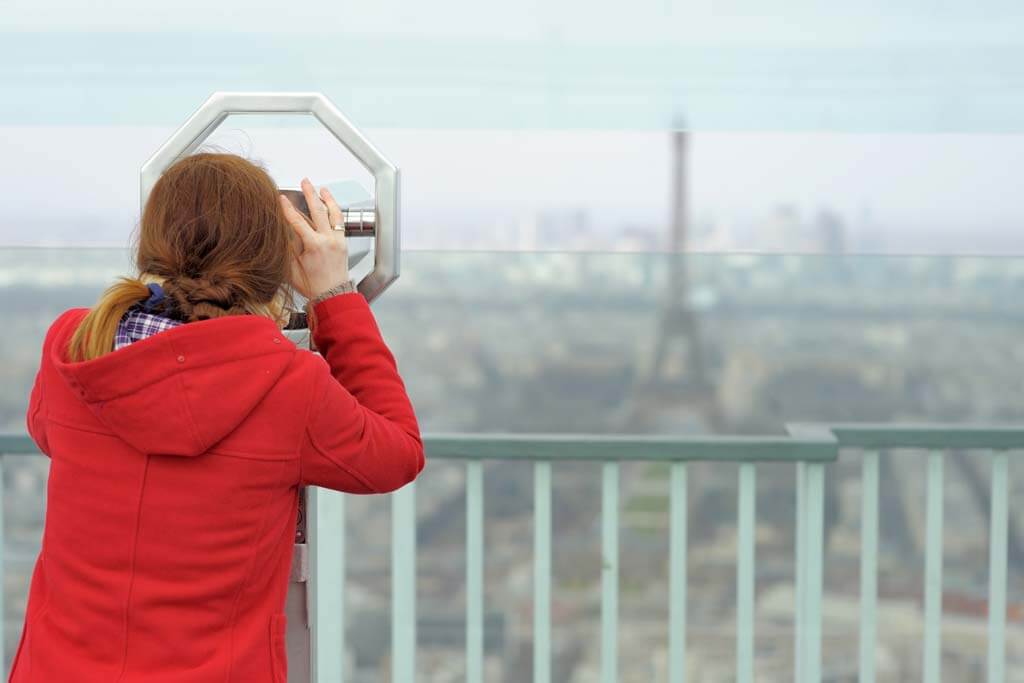
While everybody agrees the Montparnasse Tower offers one of the best views of Paris , we say it simply offers the best! While the Eiffel Tower, Arc de Triomphe, and the Sacré-Coeur, provide a great view, you can’t escape the giant Montparnasse Tower in the distance. Ironically, the Montparnasse Tower view is the best because it’s the only vantage point in the city where you don’t see the Tour Montparnasse.
From 210 meters above ground, admire one of the best Eiffel Tower views , Montmartre, the Louvre, the Invalides, and even see beyond Paris.
In clear weather, the view extends up to 40 kilometers from the Yvelines to Charles-de-Gaulle and Orly Airports and the Eastern suburbs of Val de Marne and Seine-et-Marne. From the Observation Deck, one can often see planes taking off and landing at Orly Airport!
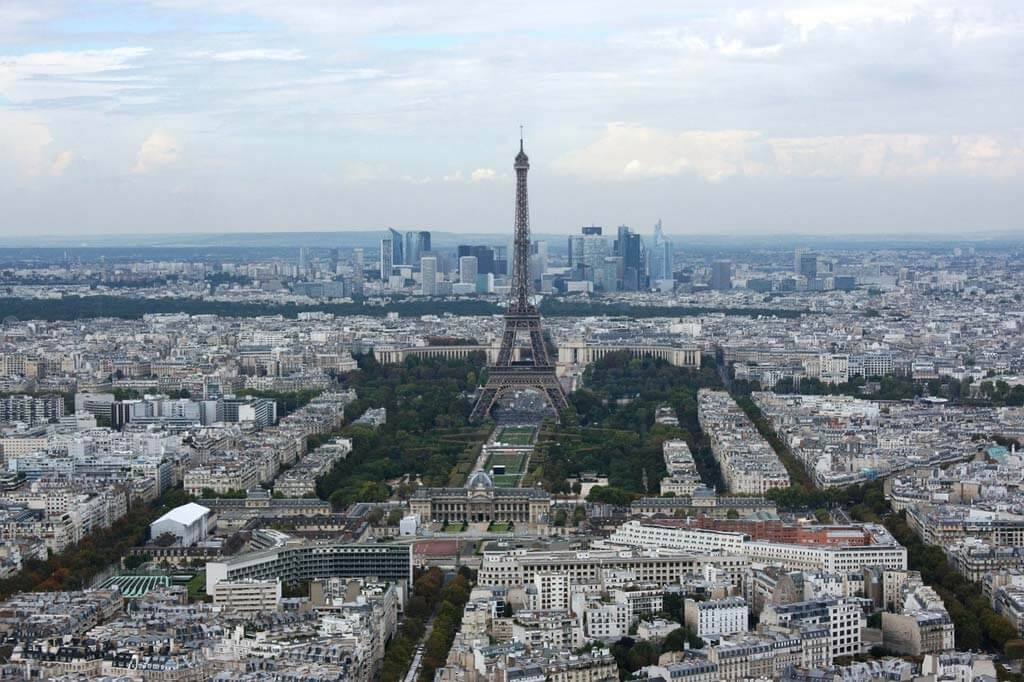
6. The Montparnasse Tower Restaurant is the Highest in Europe
On floor 56, visitors will also find the Montparnasse Tower restaurant, Le Ciel de Paris , which is the highest restaurant in Europe!
Le Ciel de Paris welcomes guests every day until 11.30 pm and provides fine dining with 360° vistas of the city and all its monuments.
Because of its unobstructed views of the Eiffel Tower, Le Ciel de Paris is one of the most coveted places to see the fireworks on the 14th of July (France’s National Day) . Book well in advance!
7. The Tour Montparnasse Was Paris’ Tallest Building in France for Nearly 40 Years!
From its construction in 1973 until 2011, the Tour Montparnasse (210 meters tall) was Paris’ tallest building and also the tallest building in France.
In 2011 however, the massive Tour First was remodeled, adding to its height and surpassing the Montparnasse Tower as the tallest in France. Located in La Défense business district, just outside Paris, the Tour First stands today at 231 meters, just 21 meters taller than Montparnasse Tower. This difference was enough to land it the title of the tallest building in France.
8. The Tour Montparnasse Was Free-Scaled in 2015
In 2015 Alain Robert, also known as “the French Spider-Man,” climbed the Montparnasse Tower without a harness or ropes in less than an hour. During his climb, he wore the Nepalese flag to bring awareness to human rights violations in this country.
As you can imagine, the Paris police were waiting for Mr. Robert on the top of the Tower with a red carpet, and he was arrested as soon as he reached the top.
9. It took 3 Years to Remove a Substance that Causes Cancer from the Tower
In 2005, a study concluded that the Montparnasse Tower contained 20 times the legal limit of asbestos material, a substance considered to be a carcinogen.
This resulted in some companies who rented office space at the Tower leaving it.
Removal of the asbestos started in the year 2009 and ended three years later. Surprisingly, the Tour Montparnasse continued to operate normally during this time.
10. A Place of Numerous Events
During summer in Paris , the Montparnasse Tower hosts a variety of events on the Observation Deck. Some of the events in the Tower are yoga, exercise classes, and live musical performances. There is also an outdoor bar, which offers a lovely chance to relax with your head in the clouds…
11. Home to the Highest Skate Rink in Paris
Believe it or not, but in winter, you can skate at the Tower’s open terrace – the highest skating rink in Paris!
For the last four years, a 30m2 ice rink made of synthetic material was installed at the top of the Montparnasse Tower at an altitude of 210m. The event welcome more than 30,000 people each year, both Parisians and tourists from all over the world, who could enjoy the joys of ice skating with unobstructed views of Paris
The highest ice rink in Paris was to return to the top of the Montparnasse Tower for a fifth edition in February-March 2023. However, “reasons beyond its control” prompted the Paris Montparnasse Observatory to cancel the event last minute. Let’s hope the Tower’s skate rink will be back in 2024!
What to Do Near the Montparnasse Tower, Paris?
- Montparnasse Cemetery
- Catacombs of Paris
- Parc Montsouris
- Carrières des Capucins
- Fondation Cartier pour l’Art Contemporain
Back to Homepage
Disclaimer: This post includes affiliate links, meaning I get a small commission if you make a purchase through my links. It costs you nothing more (in fact, if anything, you’ll get a nice discount) but helps me to go on creating incredible Paris content for you. I trust all products promoted here and would never recommend a product that isn’t of value. World in Paris is a participant in the Amazon Services LLC Associates Program. As an Amazon Associate, I earn from qualifying purchases at no expense to you.

About WORLD IN PARIS
Quirky parisian explorer with a preference for lesser-known sights, i am continuously looking for new ideas and tips to bring you the best of the city of light read more about me ., i am elisa, the travel blogger behind world in paris. quirky explorer with a preference for the local side of my city and its lesser-known sights, i am continuously looking for new ideas to enjoy the best of paris & around . do you want to go beyond the louvre museum or the eiffel tower keep clicking for first-hand information & my best tips learn more.
- Museums and Exhibits
- Shows and Comedy
- Concert and Music
- Movies and Tv Shows
- History and Heritage
The Tour Montparnasse, a 360° view of Paris
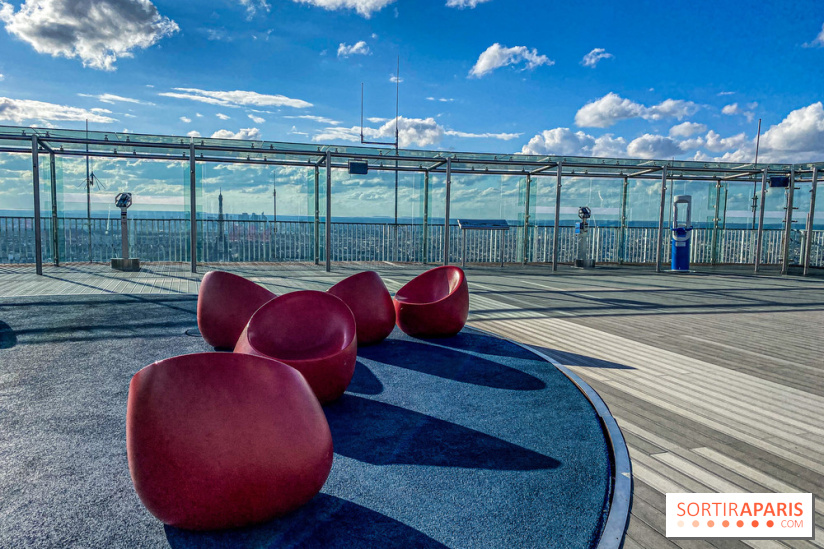
In the heart of Paris, the Observatoire de la Tour Montparnasse is one of the best-known places to get a bird's eye view of the capital. This 800m2 terrace is perched 210 metres high, on the roof of the highest (and one of the few) skyscraper in Paris. From its summit, you can enjoy a 360° panorama of the City of Light, including, of course, a view of the Eiffel Tower.
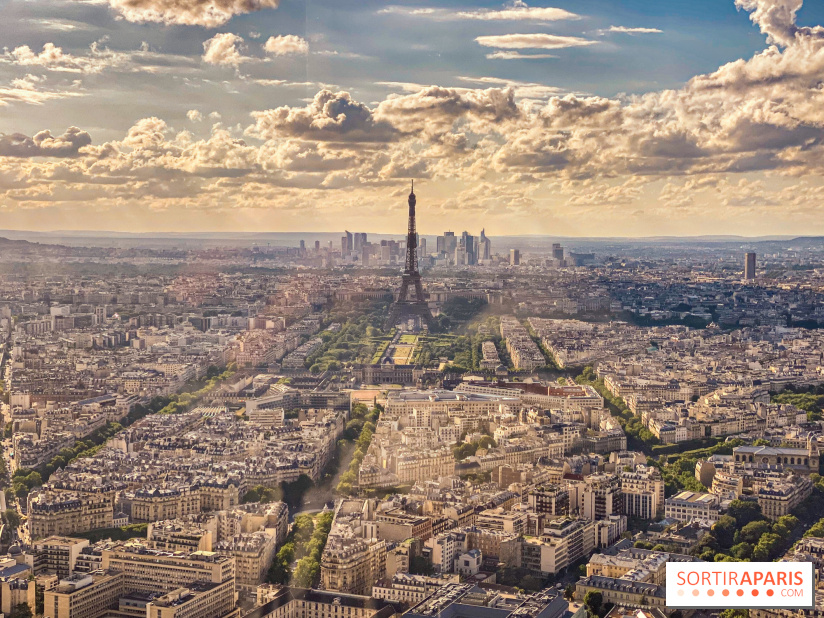
- New Beginnings post-confinement exhibition at Tour Montparnasse Top of The City
- The Musée Guimet reopens its panoramic summer terrace for the second year running
- Rooftops in Paris: The most beautiful perched terraces for a breathtaking view
Here you'll find a sheltered, designer walkway offering breathtaking views of Paris by day and night, and two observation areas. The tour also includes an immersive virtual reality experience that, on the one hand, celebrates the construction of the Montparnasse Tower and, on the other, explores the capital's history by transporting you through the ages. Throughout the year, the Observatoire de la Tour Montparnasse regularly organizes events and exhibitions to bring this well-known rooftop to life.
At night, the terrace is decked out in all its nocturnal colors . An original atmosphere and lighting design for a night-time show that passers-by can admire from the foot of the tower.
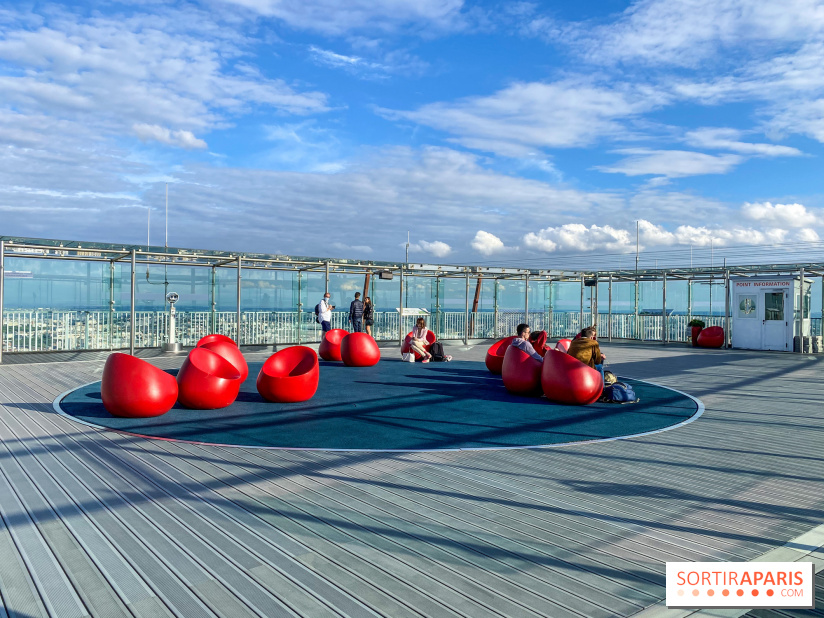
Don't forget your camera!

Refer your establishment, click here Promote your event, click here
Location Montparnasse Tower 33 avenue du Maine 75015 Paris 15
Route planner
Accessibility info
Prices - 4 ans: Free Billets: €10.5 - €21 Terrasse + champagne: €29
Recommended age For all
Official website www.tourmontparnasse56.com

- Sites and Monuments in Paris
- Sites and Monuments in France
- Things to do in Paris
- Things to do in France
- ACCOMMODATION
- RENTING A CAR
- CHEF SERVICE
- CONCIERGERIE SERVICES
- TRAVEL TIPS
- TRAVEL LUGGAGE
- Arrondissements
- Monuments & Landmarks
- Secret & Offbeat Paris
- More about Paris...
- Île de France
- More Regions of France...
- Aix-en-Provence
- More Cities...
- Castles and Palaces
- Cathedrals and Churches
- Gardens and Parks
- World Heritage Sites
- Villages of France
- Autumn / Fall
- Mardi-Gras / Carnival
- April Fools' Day
- Bastille Day
- All Saints' Day
- More Holidays and Celebrations...
- National Anthem
- Gallic Rooster
- National Day
- Motto of France
- Motto of Paris
- Coat of Arms
- French President
- Le Croissant
- French Cheese
- French Wines
- Christmas Food and Recipes
- French Nursery Rhymes
- France geography
- FUN QUIZZES
- MOVIES AND MUSIC
- FRENCH LANGUAGE
- BOOKS BY FRENCH MOMENTS
- BOOK RECOMMENDATIONS
- The Secrets of the Eiffel Tower
- The Gems of Paris
- Office desks and chairs
- Travel suitcases
- LEARN FRENCH WITH PIERRE
- THE STORY SO FAR
- WORK WITH US
- THE NEWSLETTER
- HOW TO SUPPORT US
- PHOTO USAGE POLICY
Discover the stunning view from Tour Montparnasse
Last Updated: 17 April 2024
The Tour Montparnasse (Montparnasse Tower) is a high-rise building overlooking the district of Montparnasse in the 15th arrondissement and borders the 6th and 14th arrondissements. Its panoramic terrace offers one of the most beautiful views over Paris .
Description of Tour Montparnasse
The Tour Montparnasse was inaugurated in 1973 and was France’s tallest skyscraper until 2011 when the Tour First in La Défense was completed.
The tower was designed by architects Eugène Beaudouin, Urbain Cassan and Louis Hoym de Marien and built from 1969 to 1972 by Campenon Bernard on the site of the former Montparnasse railway station. Its base is an almond shape of 50 m by 32 m.
The presence of the tower in central Paris has been very controversial since its construction and has been criticised for being at odds with Paris’ skyline. Following its inauguration, the municipality ruled it impossible for buildings over seven floors high to be built in the centre of Paris (“intra-muros”).
Today, the Tour Montparnasse has become a true Parisian landmark with over 5,000 people working in the offices located in the tower.
At the foot of the tower, there is a vast shopping mall and a busy metro station connected to the Gare Montparnasse where trains head off to the French Atlantic Coast and Spain.
Dimensions of the tower
The Tour Montparnasse is one of France’s tallest skyscrapers and, as of June 2021, is ranked the 13th tallest building in the European Union.
In France, the tower is the country’s second tallest building:
- Tour First ( La Défense ): 231 m (Antenna spire)
- Tour Montparnasse (Paris): 210 m (Roof terrace)
- and Tour Total ( La Défense ): 190 m
In the near future, two planned towers will overtake the height of the Tour Montparnasse:
– the two Hermitage Plaza Towers ( La Défense ): 323 m (2025?)
Fun facts about the Montparnasse Tower
- The tower has a total of 7,200 windows,
- The structure weighs 130,000 tons,
- There are 6 underground levels,
- Its foundations are 70 metres deep.
The Panoramic Terraces of Tour Montparnasse
The visit of Tour Montparnasse may seem odd when suggested to tourists but the magnificent view from the top is one of Paris’ most impressive panoramas and attracts 1,2 million visitors each year. Visitors access the 56th floor with one of Europe’s fastest lifts.
The 56th floor
The 56th floor , called the “Panoramic Floor”, allows the visitor to admire the breathtaking view protected from the wind and rain. The space is heated in the winter and air-conditioned in the summer. It is accessible from the bottom floor of the tower by one of the fastest lifts in Europe (38 seconds at speeds reaching 60km per hour). The floor features interactive terminals and quizzes on Paris, a photographic exhibition on Paris, a souvenir shop and a café.
The 59th floor
The 59th floor is actually the outdoor roof terrace which, at 210 metres high, offers a breathtaking 360-degree view of Paris. In clear weather, the view extends up to 40 kilometres from the Yvelines to Charles-de-Gaulle and Orly airports and the Eastern suburbs of Val de Marne and Seine-et-Marne.
The 59th floor is only accessible by stairs from the 56th floor.
The terrace has telescopes and interesting orientation tables that help locate the famous monuments and landmarks of Paris.
In 2011, the terrace was entirely renovated with curved panes of glass surrounding the viewing point.
Get your tickets to the tower’s terrace!
Get your Tour de Montparnasse tickets for 360° views over the City of Lights!
With these tickets, get an amazing view of Paris that includes the Eiffel Tower and many of the city’s other top landmarks.
Day Panoramic View
The panoramic view from the roof-top terrace of the Tour Montparnasse stretches over 40 km. Most of Paris’ famous monuments and landmarks can be seen from there:
The Eiffel Tower
The great perspective leading to the Grande Arche of La Défense through the École Militaire, the Champ de Mars, the Eiffel Tower , and the Trocadéro.
The curved Unesco headquarters can also be seen to the left of the École Militaire.
The Invalids
The gilded dome of the Church at the Invalides looks like a gem in the sky of Paris…
The view reaches the Esplanade des Invalides, the Pont Alexandre III and the Petit and Grand Palais .
To the right lies the Garden of the Champs-Élysées and then the Place de la Concorde .
The Arc de Triomphe
The view of the Louvre reveals how large the palace is! It extends onwards with the famous Tuileries Garden . Behind, on top of the Montmartre Hill , a sunbeam lights up the white façade of the Sacré-Cœur basilica .
A closer look at the Samaritaine department store:
The Opéra Garnier, just above the Tuileries Garden:
Saint-Germain-des-Prés
The neighbourhood of Saint-Germain-des-Prés is clearly recognisable thanks to the old bell tower of the church.
The Rue de Rennes looks like it cut Paris in half, leading to the Seine:
To the right of the rue de Rennes stands the Saint-Sulpice church:

The Luxembourg Palace
To the North-East, the view shows the Luxembourg Garden in the foreground along with the Luxembourg Palace.
Notre-Dame de Paris and Ile de la Cité
Behind lies Île de la Cité with Notre Dame de Paris . In the distance can be seen the Hôtel de Ville (City Hall of Paris).
The central districts of Paris
The latin quarter.
You’ll get a great view of the Pantheon, the Sorbonne and the Latin Quarter, particularly in the afternoon.
South-East of Paris
The view reveals the Val de Grace, Paris Observatory, the 13th arrondissement and, beyond these, the Bois de Vincennes.
The view extends beyond the hill of Montmartre with the basilica of Saint-Denis, the Stade de France, the airports of Le Bourget and Charles de Gaulle. In the far distance, you can also see the countryside!
And street life in the Montparnasse district…
From the top of the tower, the Montparnasse cemetery reveals its great size.
The railway lines that start from the Montparnasse Train Station lead to the French Atlantic Coast (Brittany, Poitou-Charentes, Pays de la Loire, Aquitaine) and Spain.
The aerial part of métro line 6:
The stunning rooftops of Paris in the 7th arrondissement:
The view offers amazing sights of street life in Paris (here Boulevard du Montparnasse and Boulevard de Port-Royal)
Night Panoramic View
Visiting the roof-terrace of the Tour Montparnasse at sunset offers one of the most enchanting views over the City of Light. Little by little, the lights are lit, revealing the famous monuments of Paris.
One of the best spots to enjoy the Eiffel Tower glittering is from the top terrace of the Montparnasse Tower, aligned perfectly with the Eiffel Tower, with the skyline of La Défense in the background. The “light show” takes place every hour for ‘5 minutes précieuses’ from nightfall until 1.00 am, on the hour.
The gilded Dôme des Invalides is lit up like a gem, and behind it stretches the vast esplanade that leads to Pont Alexandre III:
At Christmas time, you can clearly see the Big Wheel at the Tuileries and Place de la Concorde, in between the two dark areas of the Champs-Élysées and the Tuileries Gardens.
The length of Rue de Rennes winds its way through the 6th arrondissement leading to the Church of Saint-Germain-des-Prés. To the right, the St. Sulpice Church reveals its classical façade.
The Louvre is seen in its entirety surmounted by the Montmartre Hill and the Sacré-Cœur basilica .
Check out blogger Mark Wyld’s article on Montparnasse Tower. His post is illustrated with many of his photos taken from the top terrace!
English-French Vocabulary
(f) for féminin , (m) for masculin and (v) for verbs
- building = immeuble (m)
- to inaugurate = inaugurer (v)
- intra-muros = within the city limits of Paris
- lift = ascenseur (m)
- office building = immeuble de bureau (m)
- orientation table = table d’orientation (f)
- panoramic terrace = terrasse panoramique (f)
- railway station = gare ferroviaire (f)
- shopping mall = centre commercial (m)
- to show = montrer (v)
- skyscraper = gratte-ciel (m)
- stair = escalier (m)
- to stretch = s’étendre (v)
- terrace = terrasse (f)
- tower = tour (f)
- view = vue (f)
- viewing point = point de vue (m)
Check out our curated magazine on Flipboard for exclusive stories & insights on France!
About the author
Pierre is a French/Australian who is passionate about France and its culture. He grew up in France and Germany and has also lived in Australia and England. He has a background teaching French, Economics and Current Affairs, and holds a Master of Translating and Interpreting English-French with the degree of Master of International Relations, and a degree of Economics and Management. Pierre is the author of Discovery Courses and books about France.
Like it? Leave a comment!
Agree entirely! The Montparnasse Tower is an ugly blot on the landscape, but the views from the top of the tower are magnificent. I look forward to returning one day.
And make sure you climb on a sunny afternoon (the best time of the day to see all of central and eastern Paris!)
These are wonderful photos, Pierre – thank you! I always say the best thing about the Tour Montparnasse is being in it so you can’t see it! I’m going to choose a clear day when I’m in Paris to go to the top.
Merci Ellen – and choose a sunny afternoon to have the central and eastern districts of Paris in plain sight (not against-the-light)! 🙂
I’ve been there, once at day- and once at nighttime. Indeed very beautiful.
Transparency: Some blog posts and pages may contain affiliate or sponsored links. If you are planning a trip, the use of these links helps us to run the site. There is no additional cost to you. All you have to do is click on the link and any booking you make is automatically tracked. Thank you for your support!
Escape to France with every email! Get insider insights, travel guides, cultural gems delivered and exclusive offers to your inbox twice a week. Your journey to Paris and France begins when you sign up!
SUBSCRIBE TO THE NEWSLETTER AND GET THE FREE EBOOK
24 PLACES TO SEE IN FRANCE
Session expired
Please log in again. The login page will open in a new tab. After logging in you can close it and return to this page.
Tour Montparnasse Tour Maine-Montparnasse

The Montparnasse Tower, built in 1973, was one of the first tall skyscrapers in Paris. A visit to the tower’s observation deck is rewarded with a magnificent view over the city.

One of the main reasons why Paris is considered one of the most beautiful cities in the world is the continuity in its urban planning and architecture. From the early developments during the reign of Henry IV in the sixteenth century up to the nineteenth century with the large developments under Haussmann, the Prefect of the Seine from 1853 until 1870, international architecture had little influence on Paris.
A Classicist City
Even large influential architectural styles like Baroque, Rococo, Art Nouveau and the Modernist style had very little practical effect on Paris where classicism was seen as the true French style. This started to change after the Second World War, when the new Gaullist regime of 1958 started to support and even promote the development of towers in the city center. One of the first major towers built in Paris was the Tour Maine Montparnasse.
Construction
The project started as a redevelopment scheme of the Montparnasse and Maine railway stations in 1958 and had strong support from the new government. The tower itself was built between 1969 and 1973. According to the initial plans, the tower would have a maximum height of 154 meters (505 feet). But even after this was approved by a commission, the developers increased the height to more than 200 meters, even though this increase was never officially approved.
Skyline Intrusion

During construction, the tower was very popular as it became a symbol of the new modern Paris. This changed however when the 210-meter-tall (689 ft.) Tour Montparnasse was completed. Public opinion turned against the tower, mainly because it intruded the skyline. As a result, nowadays, skyscrapers are built on the outskirts of Paris, mainly in the Défense business district.
Observation deck
While the tower itself may not be worth a visit in itself – unless you are a skyscraper fanatic – the observation deck on the 56th floor of the Tour Montparnasse certainly merits a visit as it offers you a panoramic view over the city of Paris.
On clear days, you can see almost 40 kilometers (25 miles) far. The view is especially magnificent at night, when you can clearly see illuminated landmarks such as the Eiffel Tower and the Dôme des Invalides . You can also climb from the 56th floor to the roof of the building on top of the 59th floor for an even better view.
- Next: Parc des Buttes-Chaumont
- More Sights & Attractions in Paris
Place Raoul Dautry 15e arrondissement
- Locate on Map
Public Transport
Montparnasse-Bienvenue (M4, M6, M12, M13)
Official site
www.tourmontparnasse56.com
- Hispanoamérica
- Work at ArchDaily
- Terms of Use
- Privacy Policy
- Cookie Policy
- Architecture News
Nouvelle AOM Wins Competition to Redesign Paris' Tour Montparnasse

- Written by Patrick Lynch
- Published on September 21, 2017
The architectural consortium of Nouvelle AOM has been announced as the winner of the international competition for the renovation and redesign of Paris ’ Tour Montparnasse , beating out finalist Studio Gang and a shortlist of top firms.
Lauded by the jury for its “powerful, dynamic and bold new identity,” the winning entry will introduce an entirely new vegetated facade system that will improve both the tower’s immediate surroundings and the neighborhood as a whole.
"This was a huge challenge, as the Tower isn't like any other," the jury explained. "Nouvelle AOM's project perfectly captures the spirit of the 21st century, giving the Tower a multifaceted identity revolving around attractive, innovative new uses. The Tower will breathe new life into the Montparnasse neighbourhood."

"The City of Paris is delighted with this choice, which marks the beginning of a major transformation of both the Montparnasse Tower and the city itself,” added Jean-Louis Missika, deputy mayor of Paris for urban planning, architecture, attractiveness, economic development and the Greater Paris (Grand Paris) initiatives.
“Nouvelle AOM's project is perfectly aligned with our architectural vision: resolutely focused on uses, kind to the environment and exemplary in terms of energy efficiency. The consortium's subtle architectural intent will allow the Tower to recapture the hearts of the people of Paris.”

The consortium of Nouvelle AOM (Nouvelle Agence pour l’Opération Maine-Montparnasse) was established to take on this project, consisting of three Paris-based firms working collaboratively: Franklin Azzi Architecture, Chartier Dalix Architectes and Hardel et le Behan Architectes. Their design breaks down the vertical focus of the original tower, replacing it with an emphasis on more approachable horizontal elements. A new facade will transform the atmosphere of the building, replacing opaque surfaces with transparent ones.

"When we took up the challenge of this exciting competition, our focus was on revealing the beauty of the Tour Montparnasse from the inside out. We achieved this by incorporating radically new uses and crafting a complete sustainable 'green' makeover of the facade. The aim is to make the Tower an icon of the 21st century energy revolution," explains Nouvelle AOM.
The €300 million project,, financed entirely by the tower's co-owners, is scheduled to be completed in time for the 2024 Olympic Games in Paris.
Image gallery

- Sustainability
想阅读文章的中文版本吗?

MAD‘都市蜃楼’败了,Nouvelle AOM ‘内在美’赢得巴黎蒙帕纳斯大厦改造设计竞赛
You've started following your first account, did you know.
You'll now receive updates based on what you follow! Personalize your stream and start following your favorite authors, offices and users.
The New York Times
T magazine | seven leading architects defend the world’s most hated buildings.
Advertisement
Seven Leading Architects Defend the World’s Most Hated Buildings
As told to ALEXANDRA LANGE JUNE 5, 2015
Can the field’s top minds change the way we think about a doomed housing project in Naples or the most abhorred skyscraper in Paris? Allow them to try.
“It’s legendary for being the most hated building in Paris. I want to defend it not because it’s a particularly beautiful tower, but because of the idea it represents. Parisians panicked when they saw it, and when they abandoned the tower they also abandoned the idea of a high-density sustainable city. Because they exiled all future high rises to some far neighborhood like La Défense, they were segregating growth. Parisians reacted aesthetically, as they are wont to do, but they failed to consider the consequences of what it means to be a vital, living city versus a museum city. People sentimentalize their notions of the city, but with the carbon footprint, the waste of resources, our shrinking capacity, we have no choice but to build good high-rise buildings that are affordable. It’s not by coincidence that people are going to London now not just for work but for the available space. No young company can afford Paris. Maybe Tour Montparnasse is not a work of genius, but it signified a notion of what the city of the future will have to be.”
Libeskind recently completed work on Vitra, a luminous, 16-story residential tower in São Paulo, Brazil.
“The 1960s were a remarkable moment of social reform. The ideas of change, liberation and freedom were critical. Now people think public buildings should be more flowery, but these were times when people did tough projects. The complex is arranged as a sequence of interconnected indoor and outdoor public spaces that flow into each other. There is an integrity within the design that displays a commitment to engagement and connectivity. As a center for civic governance, it enacted democracy through spatial integration, not through the separation of elected representatives from their constituents. Many similar projects around the world have also suffered neglect; yet sensitive renovation and new programming reveal a profound lightness and generosity, creating exciting and popular spaces where people can connect. Rudolph’s work is pure, but the beauty is in its austerity. There are no additions to make it polite or cute. It is what it is.”
Hadid’s Messner Mountain Museum Corones, a mountaineering museum embedded nearly 7,500 feet above sea level at the summit of Mount Kronplatz in South Tyrol, Italy, opens July 23 .
“Against my better judgment, I like this complex. It’s sculptural, architectural abstraction to the extreme. At a distance, the scale of the skyline exudes a sense of identity and strength for Albany, while at the pedestrian level the Plaza plays an important role in the community. I know that others find it too brutal or forbidding, but I think it’s beautiful in its monumentality and starkness. Monumentality always suggests supreme power, and that’s scary. I somehow think that if you could populate the Plaza with more gardens, and make it feel more part of everyday life — which they’ve tried to do with farmers’ markets and using the basin for ice skating — then it wouldn’t feel so hostile. Ultimately it has to do with the sense of feeling included and welcome. When life is allowed to enter, it makes a space feel alive. Then it becomes an outlet for the expression of our democratic values of assembly and freedom of speech.”
Selldorf recently performed renovations on the Sterling and Francine Clark Art Institute in Williamstown, Mass., which was reopened last summer.
“If somebody put this complex in front of me right now without adding any context, any history, I would consider it a really strong piece of architecture. They are iconic buildings that embed the Modernist idea of the right to a home — a home for everyone. At the time it was conceived, the complex was very positive, optimistic and progressive. It embodies the idea of the megastructure as the mechanism that can solve the pressing problem of overpopulation and saturation of the city center. The urban planning for the development of the area also testifies to that optimism, with all the roads named after leftist, Socialist or Marxist Italian figures. The interior courtyard and shape of the sail combines the most humble and lively moment of Naples life — the vicolo (narrow street) — with the city’s opulent iconography of the water. But the complex was cursed. It wasn’t built as specified; value-engineering changed the structure and reduced the interior courtyards, therefore limiting the amount of light. None of the planned public spaces, amenities, schools or offices were ever constructed. The buildings were squatted even before completion. The Camorra installed gates and blocked the police from entering. For me it is important to recognize that the Vele is not a failure of the architecture, but rather a failure in execution and management. Demolition is often an attempt to sweep things under the carpet, and that doesn’t seem like the right way to learn from the past.”
LOT-EK’s DRIVELINES Studios, a residential building made of over 300 upcycled shipping containers and built over an old car repair shop in Johannesburg’s Maboneng Precinct, is expected to be completed in 2016.
“Tempelhof is one of the really great buildings of the modern age, and yet it is inevitable that it is not necessarily celebrated by everyone. Its architect, Ernst Sagebiel, studied under the Jewish master Erich Mendelsohn but later served the Nazis. It was adjacent to a concentration camp that held journalists, politicians, Jews and other so-called ‘undesirables,’ so it is redolent with all the most negative associations. Like a pendulum, it served the purposes of the fascist regime and then became a lifeline with the airlifts of 1948 and 1949 that delivered food to the people of West Berlin. The airport is full of contradictions and paradoxes. It has an austere facade, which is not so fascist, and could almost appear in Sweden. The back is a sweeping, cantilevered curve. It soars. If you were transported there and were to walk under that cantilever, you would be awestruck. The architecture is heroic, not in a pompous, empty, vacuous sense, but as engineering that really lifts the spirit. Monuments, if you trace their ancestry, can reveal disturbing things about the past. Nonetheless, they have enduring qualities which, viewed on their own merits, are perhaps an example to us.”
Foster is currently at work on a highly sustainable international airport in Mexico City — his seventh airport, and one of the world's largest.
“What fascinates me is that in its time the BT Tower was a building that was entirely about its function as a telecommunications tower: Its purpose was its height. Now, without the satellite dishes, that purpose is redundant. It’s lost a lot of its visual and symbolic power. I was 10 when it was finished in 1965 and it was the tallest building in London for many years. It was a marker of arrival if you were coming from the north. That, in the context of London’s skyline now, is extraordinary. It was the first building with an observation deck — that way of engaging with the city was actually pioneered by the tower. It had a restaurant that wasn’t particularly expensive. High rises today are about exploiting the skyline for private gain. But Londoners are capable of being nostalgic too: We have a power station that is now a modern art gallery. I wonder if the satellites and antennae shouldn’t be reinstated to communicate its purpose as an enduring symbol of the moment in the 1960s when technology propelled Britain onto the international stage. It’s a reminder. It holds so much meaning in an elegant slender cylinder.”
Levete’s expansion of the Victoria & Albert Museum in London , including a new courtyard, entrance and exhibition galleries, will open to the public in 2017.
“I admire its boldness and openness as a building that participates with — and is woven into — its city, its place, its time. It was without any respect for the environment, a cultural factory where you could observe important modern art collections, a superexpressive, very colorful, complex building. It was seen as a rejection of the neighborhood, the Marais, and of Paris itself. Paris stands for French stone and light gray rooftops and beautiful natural colors, and all of a sudden you have got this architectural machine. On the other hand, the building has this democratic purpose because it attracts how many millions every year. I couldn’t take my eyes off it when I was studying architecture. It reversed the typical model of a museum into something that was engaging and inviting to the public. Architecture at that time needed to do things differently, like a shock. The shock liberates a lot of emotions and perceptions.”
Van Duysen recently completed the TR Residence, a composition of three black timber buildings that accommodate a private residence and horse stables, in Knokke, Belgium.
More on NYTimes.com
Find anything you save across the site in your account
Studio Gang and Studio NAOM Selected as Finalists to Redesign Paris’s Tour Montparnasse

A Parisian landmark will soon undergo a redesign. No, it's not the Eiffel Tower or the Arc de Triomphe , but the 44-year-old skyscraper Tour Montparnasse. Studio Gang and the Marseille-based firm Studio NAOM have been selected as the two final teams competing for the redesign of Paris’s Tour Montparnasse. The firms beat out an impressive list of other firms that included OMA, MAD Architects, and Dominique Perrault Architecture, among others.
Standing just under 690 feet tall, the building is the third largest within Paris and its surrounding neighborhoods. The competition asked teams to submit a vision for the tower that “not only creates a powerful, dynamic and bold new identity for the Tour Montparnasse but also addresses all the challenges involved in terms of user accessibility, comfort and energy performance.” What the competition left out is the fact that the current skyscraper is an eyesore. Indeed, it was even listed by AD earlier this year as one of the 24 ugliest skyscrapers in the world .
While renderings of the proposals have not been made available to the public, there is still a sense of excitement around the upcoming redesign. "The City of Paris is delighted with the outstanding level of proposals competing in this final stage of the competition,” said Jean-Louis Missika, deputy mayor of Paris in charge of town planning, architecture, and economic development. "Both candidates have demonstrated an expert grasp of the urban challenges posed by the Tour Montparnasse. Their proposals will enable the tower to adapt to the challenges of the 21st century and establish a new landmark in Paris's modern cityscape."
The $352 million project will be completely funded by the building’s owners. The winning project will be announced in September; construction is scheduled to begin in 2019, with completion targeted for 2023.


- Top Attractions
- Tourist Attractions
Tour Montparnasse
Tour Montparnasse (Montparnasse Tower) stands 689 ft (210 m) tall. It has one of the best observation decks of Paris. From its terrace visitors will be able to see the most important monuments of the city.
Past and Present
Opened in 1973, the Tour Montparnasse was the first office building to be built in the center of Paris. It was the subject of great controversy as many Parisians believed that the skyscraper clashed with the rest of the city’s architecture.
Presently, nearly 5,000 people work on one of the building’s 53 floors , while over 750,000 travelers climb to its observation decks on the 56 and 59 floors to enjoy some of the best views of Paris.
Stunning Bird’s Eye View of Paris
After having taken a lift in Europe’s fastest elevator, visitors will get off on the 56th floor to see a stunning bird’s eye view of the city, protected by the building’s large windows. As well as enjoying the panoramic views, you can find out some curious facts about the city through multimedia apps or else travel back in time and visit Paris years ago during the exhibition of old photographs of the capital.
The best photos of the city can be taken three floors up, on the 59th floor. From this observation terrace, you’ll see Paris as if it were miniature.
One of Montparnasse’s great advantages is that it provides great views of the Eiffel Tower , something impossible to see if you climb up this monument to see the scenery.
Buy tickets for the Montparnasse Tower
If you plan to visit the Montparnasse Tower, we recommend buying tickets in advance. This way you'll make sure to reserve your spot and even get a small discount. You can buy them through the web at the following link:
- Montparnasse Tower ticket
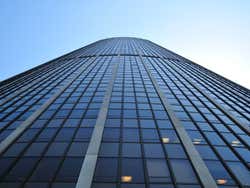
Avenue du Maine, 33
1 April – 30 September : 9:30 am – 11:30 pm 1 October – 31 March : Sunday – Thursday: 9:30 am – 10:30 pm Friday – Saturday and public holidays: 9:30 am – 11 pm
Adults: € 20 ( US$ 22.20) Youth (12-17 years old) and students: € 15.50 ( US$ 17.20) Children (4-11 years old): € 9.50 ( US$ 10.60) Free entry with the Paris Pass .
Montparnasse Tower Ticket € 20 ( US$ 22.20)
Metro : Montparnasse-Bienvenüe , lines 4, 6, 12 and 13. Bus : Lines 28, 58, 82, 88, 89, 91, 92, 94, 95 and 96.
Nearby places
Catacombs of Paris (1.2 km) Jardin du Luxembourg (1.2 km) Church of Saint-Sulpice (1.3 km) Musée Rodin (1.5 km) Les Invalides (1.6 km)
You may also be interested in
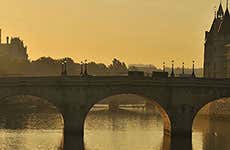
The Most Beautiful Bridges of Paris
The River Seine runs along Paris separating the city into several parts. Along the 8 miles of waterway there are over 30 bridges and footbridges: from the most ancient built of stone to the most futuristic and recent made of metal.
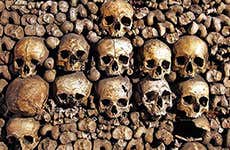
Catacombs of Paris
The Catacombs of Paris are a network of tunnels that are used as an ossuary for millions of people from various periods. It was opened to the public in 1874.

Tour Montparnasse
This project will be renovated in 2024 and replaced by Tour Montparnasse (Renovation)

© Steven Henry

© Nathaniel Lindsey

© Mark CH Thompson

You must be a CTBUH Member to view this resource.
Official Name
Other names.
Tour Maine Montparnasse
33 Avenue du Maine
Structural Material
Concrete-Steel Composite
209 m / 686 ft
Floors Above Ground
# of elevators.
- By Location
Construction Schedule
Construction Start
Usually involved in the front end design, with a "typical" condition being that of a leadership role through either Schematic Design or Design Development, and then a monitoring role through the CD and CA phases.
A. Epstein and Sons International
Material supplier material supplier refers to organizations which supplied significant systems/materials for a building project (e.g. elevator suppliers, facade suppliers, etc)., otis elevator company.
01 November 2013
Confronting the Question of Demolition or Renovation
Dario Trabucco & Fava Pablo, Università IUAV di Venezia
Crumbling façades, asbestos, and outdated elevators are often cited as reasons to tear down tall buildings and create new skyscrapers. However, renovating a tall building...
13 April 2011
Tall and Urban: An Analysis of Global Population and Tall Buildings
CTBUH Research
Tall buildings are spreading across the globe at an ever-increasing rate. This study demonstrates the relationship between population and tall buildings across those countries and...
There are no results for your search query. Please try a different variation.
Subscribe below to receive periodic updates from CTBUH on the latest Tall Building and Urban news and CTBUH initiatives, including our monthly newsletter. Fields with a red asterisk (*) next to them are required.
Skyscraper Center site feedback
We are identifying potential improvements to the CTBUH Skyscraper Center database. The first step of this research is to understand the users of the database and what they are looking for. Please take a couple moments to share your feedback.
1. Why did you come to the Skyscraper Center today? *
2. What are you looking for? * This can be a short answer, we want to understand what task you are trying to accomplish.
3. May we ask you a couple follow-up questions after you complete your visit today? If yes, please enter a convenient email we may reach you at and a new tab will open with the follow up survey.
We use cookies to improve your experience on our website. Review our Privacy Policy for more information.

- City Tours >
- Art Deco Skyscrapers: The...
Art Deco Skyscrapers: The Riverfront

Trustees System Service Building, interior. Photo by Bill Coffin.
Tour the lobbies of five opulent Art Deco skyscrapers built near the banks of the Chicago River during the business boom of the Roaring '20s. Learn how Art Deco reflected the era’s fun-loving optimism with lavish materials and geometric ornament.
Architects and Styles
- Burnham Brothers ,
- Graham Anderson Probst and White ,
- Holabird and Root
Chicago Architecture Center, 111 E. Wacker Dr.
Discover the origins of Art Deco while admiring buildings like the Carbide and Carbon Building (now Pendry Chicago), the Chicago Motor Club Building (now the Hampton Inn) and the colorful, but often overlooked, Trustees System Service Building (now the Century Tower)—all of which are designated Chicago landmarks. This tour ends at the Merchandise Mart .
Tour reviews
When I lead this Deco tour, I get a kick out of seeing guests’ faces light up when they go inside the lobbies -- buildings aren’t designed with glitzy ornament like this anymore!
My family and I had a great time in a chilly day in November visiting Art Deco buildings with our guide Cynthia. It was a cold morning in Chicago, nonetheless the combination of time spent outside and inside of the buildings, along with Cynthia’s knowledge, enthusiasm and warmth made this a wonderful experience. The tour was very informative, and gave us the opportunity to learn about and see Art Deco details that are normally overlooked. Once again, the Chicago Architecture Center lived up to our expectations.

Carbide and Carbon Building Elevators. Photo by Eric Allix Rogers.

Merchandise Mart, lobby. Photo by Bill Coffin.

Merchandise Mart, elevators. Photo by Bill Coffin.

Chicago Motor Club Building. Photo by Eric Allix Rogers.
Featured buildings

Free Center Entry with Your Ticket
Ticket price includes entrance to the Chicago Architecture Center within 7 days of your walking or bus tour.

COMMENTS
Tour Maine-Montparnasse (Maine-Montparnasse Tower), also commonly named Tour Montparnasse, is a 210-metre (689 ft) office skyscraper in the Montparnasse area of Paris, France.Constructed from 1969 to 1973, it was the tallest skyscraper in France until 2011, when it was surpassed by the 231-metre (758 ft) Tour First in the La Défense business district west of Paris's city limits.
modifier - modifier le code - modifier Wikidata La tour Montparnasse est le plus haut gratte-ciel de Paris intra-muros , situé dans le quartier Necker (15 e arrondissement) de Paris . Sa hauteur de 209 m (ou 210 m selon les sources ) en a fait pendant près de quarante ans l'immeuble le plus haut de France, jusqu'à l'achèvement, à La Défense en 2011, de la tour First . Inaugurée en 1973 ...
In a city defined by harmonious 19th-century architecture, the dark glass-and-steel design of Montparnasse Tower has always stood out like a 690-foot sore thumb. When it was completed in 1973 ...
In 1959, the first studies for Montparnasse Tower were conducted, and the historic project was criticised for its height, and met with roadblocks. The winning project, designed between June 1966 and spring 1969, brought together four architects: Urbain Cassan, Eugène Beaudouin, Louis de Ho m de Marien, with help from architect Jean Saubot.
In "La Tour Montparnasse 1973-2013," Picon-Lefebvre takes a similar perspective on the high corporate style of the sixties and seventies, exemplified by the Tour Montparnasse: "We have very ...
Developed for the international competition to redesign Tour Montparnasse, Studio Gang's design transforms this monolithic skyscraper into a beautiful new landmark for twenty-first-century Paris—a tower that is simultaneously a dynamic hub for economic innovation, a vibrant center of community life, and a global model of sustainability. A ...
At 689 feet tall, the monolithic Tour Montparnasse, an office skyscraper in the 15th arrondissement of Paris, is as imposing today as when it was completed in 1973.
The Tour Maine-Montparnasse, best known as Tour Montparnasse or Montparnasse Tower, is one of the most famous landmarks in Paris. With 59 floors and 210 m high, the Tower is Paris' tallest building and the only skyscraper in the city. This stupendous Tower is situated at 33 Ave. du Maine, in the 15th Arrondissement of Paris.
September 21, 2017. The architectural consortium of Nouvelle AOM has been announced as the winner of the international competition for the renovation and redesign of Paris ' Tour Montparnasse ...
In the heart of Paris, the Observatoire de la Tour Montparnasse is one of the best-known places to get a bird's eye view of the capital. This 800m2 terrace is perched 210 metres high, on the roof ...
The Tour Montparnasse was inaugurated in 1973 and was France's tallest skyscraper until 2011 when the Tour First in La Défense was completed. The tower was designed by architects Eugène Beaudouin, Urbain Cassan and Louis Hoym de Marien and built from 1969 to 1972 by Campenon Bernard on the site of the former Montparnasse railway station ...
The Montparnasse Tower, built in 1973, was one of the first tall skyscrapers in Paris. A visit to the tower's observation deck is rewarded with a magnificent view over the city. Tour Montparnasse. One of the main reasons why Paris is considered one of the most beautiful cities in the world is the continuity in its urban planning and architecture.
The architectural consortium of Nouvelle AOM has been announced as the winner of the international competition for the renovation and redesign of Paris ' Tour Montparnasse, beating out finalist ...
Address. 33 Avenue du Maine. Function. A single-function tall building is defined as one where 85% or more of its usable floor area is dedicated to a single usage. Thus a building with 90% office floor area would be said to be an "office" building, irrespective of other minor functions it may also contain. A mixed-use tall building contains two ...
Lucky for all, Paris's 59-story Tour Montparnasse is set to undergo a substantial renovation just in time for the city to host the 2024 Olympic Games. Nouvelle AOM, an agency formed by the heads ...
In spite of the original tower's reputation as one of the ugliest buildings in the world, some in the architectural community defended its modernizing design. As Daniel Libeskind told the New York Times in 2015, "Maybe Tour Montparnasse is not a work of genius, but it signified a notion of what the city of the future will have to be."
When the nearly 700-foot Tour Montparnasse (center) was completed in 1973, it was considered such a blight on Paris's historic skyline that the city instated height restrictions on all future ...
Studio Gang and the Marseille-based firm Studio NAOM have been selected as the two final teams competing for the redesign of Paris's Tour Montparnasse. The firms beat out an impressive list of ...
Past and Present. Opened in 1973, the Tour Montparnasse was the first office building to be built in the center of Paris. It was the subject of great controversy as many Parisians believed that the skyscraper clashed with the rest of the city's architecture.. Presently, nearly 5,000 people work on one of the building's 53 floors, while over 750,000 travelers climb to its observation decks ...
The Tour Montparnasse consists of two main levels for visitors: the 56th floor, which is indoors and gives you about 180-degree access to Paris' best views. Honestly, I particularly loved this interior part because there's really nothing that you miss on the other 180-degree part of the view, because this part of the city isn't very ...
Address. 33 Avenue du Maine. Function. A single-function tall building is defined as one where 85% or more of its usable floor area is dedicated to a single usage. Thus a building with 90% office floor area would be said to be an "office" building, irrespective of other minor functions it may also contain. A mixed-use tall building contains two ...
An old and beautiful trainstation was just in front of the Tour Montparnasse but it was destroyed like...not so many buildings in Paris hopefully. ... My personal favourite type of architectural feature. I love their unintentional symbolism of framing an empty space. ... They are common in rococo, baroque, and beaux arts styles. But can also be ...
Tour Eiffel is the exact opposite of Tour Montparnasse. The first was hated by the artistic elite and architectural academia and adored by the masses. The latter is reverse - cherished by the architectural academia and hated by the people. Tour Eiffel was considered a national landmark within 5 years of its completion.
Voted #1 boat tour in the United States by USA Today readers in 2024, as well as Chicago Reader's... tickets & times. Bus. ... Embark on a journey through Frank Lloyd Wright's evolution of Prairie Style architecture with a... tickets & times. Stay updated with CAC's newsletter. Subscribe Now. Follow us on social media.
The Prairie style emerged in Chicago around 1900 from the work of a group of young architects, including Frank Lloyd Wright.These architects melded the ideals of the Arts and Crafts movement, with its emphasis on nature, craftsmanship and simplicity, and the work and writings of architect Louis Sullivan.They embraced Sullivan's architectural theories, which called for non-derivative ...
The Northwestern tour is unique among the tours I give because of the quiet, bucolic setting of the campus and the backdrop of Lake Michigan. It contains buildings by noted architects Daniel Burnham, George W. Maher, Henry Ives Cobb, and Walter Netsch and covers a wide variety or architectural styles over more than 150 years of campus development.
American architects introduced Gothic Revival buildings in the mid-19th century, inspired by an 18th-century British revival. This style reimagined medieval European architecture for picturesque churches, homes, and university buildings in the U.S.
Discover the origins of Art Deco while admiring buildings like the Carbide and Carbon Building (now Pendry Chicago), the Chicago Motor Club Building (now the Hampton Inn) and the colorful, but often overlooked, Trustees System Service Building (now the Century Tower)—all of which are designated Chicago landmarks. This tour ends at the Merchandise Mart.